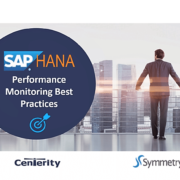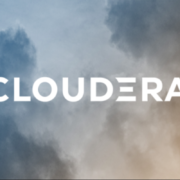Centerity Systems Announces Support for Kubernetes
Newton, MA — October 31, 2017 — Centerity Systems Inc., the leading provider of unified IT & IoT performance analytics and business service management solutions, today announced that it supports Kubernetes, the most widely-used, open-source container management system. Centerity’s support for Kubernetes enables enterprises to safeguard the performance and service levels (SLA) of business processes and workflows that utilize application containers, which are often spread across clusters of hosts.
Enterprises that adopt the use of containers for critical business processes need the ability to identify adverse effects on the performance and reliability of those processes. Centerity’s automated topology and dependency mapping recognizes problems in other IT layers/components that may have a cause-effect impact on the container application, either upstream or downstream from the container, which is critical information for improving service levels and CSAT. Compared to traditional IT and Operations Management/ Analytics tools (ITOM/ITOA), Centerity reduces the number of false positives (false alarms) that distract system administrators resulting in more focused efforts where it matters most, at the source of the problem. One customer has estimated that Centerity has reduced MTTR by as much as 80%.

“We have a long history supporting both containers and open source software, which makes Kubernetes support a logical decision”.
Marty Pejko, COO of Centerity Systems said, “We have a long history supporting both containers and open source software, which makes Kubernetes support a logical decision. Given all the advantages of virtualization and containerization, Centerity is pleased to be the only software company to deliver performance analytics that fully support these technologies at the enterprise level. Whether containers are deployed on Converged or Hyperconverged architectures (CI/HCI), in the Cloud, on-prem, hybrid, or in a multi-tenanted environment, Centerity ensures businesses achieve the highest performance and reliability at the lowest possible cost.” Pejko continued, “Centerity’s customers regularly report reduced downtime, faster mean-time-to-repair (MTTR), and fewer no-trouble-found (NTF) and false positive service calls. As a result, these companies are experiencing better service level agreement (SLA) performance, increased quality, and higher customer satisfaction (CSAT) and net promoter scores (NPS).”
Centerity’s solutions help companies identify IT and IoT/IIoT system dependencies that act as performance bottlenecks, and to reduce the variation (increase consistency) in how performance problems are addressed. In this way Centerity, paired with Kubernetes, is a critical component of lean and six-sigma (LSS) initiatives and plays a critical role in ensuring profitability.
About Centerity
Centerity’s award winning software provides a unified enterprise-class IT performance analytics platform that improves performance and reliability of business services to ensure availability of critical systems. By delivering a consolidated view across all layers of the technology stack including, applications, Big Data, operating systems, database, storage, compute, security, networking, Cloud, Edge, and IoT/IIoT devices, Centerity provides an early warning of performance issues along with corrective action tools to quickly isolate faults and identify root causes.
Media contact information:
Dalia Perl Olshvang, Marketing Manager
T: +1 (617)-4311959
E: info@centerity.com















